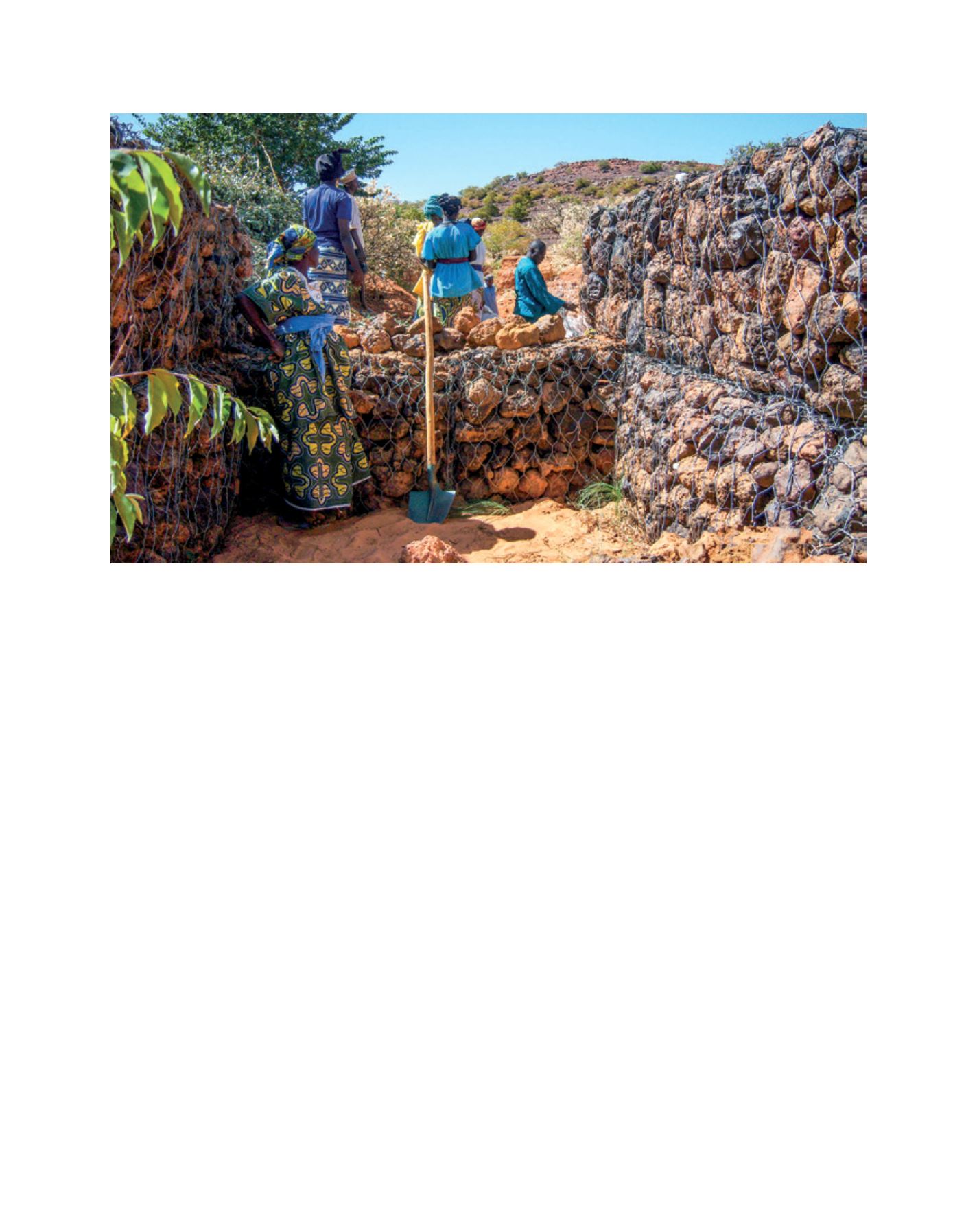

[
] 31
and sustainably undertake actions/activities against silting in
the Niger River. The PLCE is a multinational programme with
a regional integration ambition. It includes the involvement
and consultation of the nine NBA member states through the
implementation of national components in Mali, Niger and
Burkina Faso. The total cost of the programme is US$51.1
million including contributions from the NBA, member states
and beneficiaries.
A participatory approach was adopted for the implementa-
tion of activities for siltation control in the Niger basin. It
included the generation of the required information, creation
of awareness, and the training and organization of commu-
nities and other stakeholders to develop their capacity and
commitment through their significant involvement and
accountability to implement the programme’s activities. The
participatory approach was deployed in six major steps:
• inform/raise awareness on the programme content
• establish democratic community organizations
• conduct a participatory diagnosis to define the
communities’ landscape and identify resources, problems,
possible solutions and associated costs
• record the commitments of each stakeholder through
a signed memorandum of understanding with each
community organization
• supervise the communities in the implementation of
activities based on an Annual Work Plan
• conduct a participatory evaluation of the activities carried out.
This approach generated, among other things, a massive and
voluntary membership of the beneficiaries (farmers, breed-
ers, fishermen, loggers, youth and women) in all activities of
the programme, and better learning conditions to internalize
technical and organizational approaches.
Land recovery/restoration techniques used during the PLCE
implementation are grouped into three methods: glaze treat-
ment, dune fixation and correcting ravines. The glaze (which
refers to degraded land with impermeable crust) occupies a
significant part of the Sahel basin. This degradation makes
the rain wash over the soil and results in the decline/denial
of crops and the disruption of socioeconomic activities of
the communities. To reverse this situation emphasis was put
on the recovery and recycling of glaze with the objective to
reduce run-off speed, promote infiltration, increase the clay-
silt-sand deposits, and thus help to achieve improved soil
fertility which in turn leads to increased productivity and
production with the associated revenue. In addition, this
effort also led to the restoration of biodiversity. The methods
used for glaze treatment are mechanized subsoiling, making
erosion control strips (half-moons, benches and trenches),
the Zaï or Tassa, stone barriers and dry stone thresholds.
The mechanical works are reinforced by biological treatment
(direct sowing, planting trees and grasses, agricultural and
fodder speculations).
Dune fixation entails stabilizing dunes through a combina-
tion of mechanical (wattle using plant-based materials) and
biological actions (planting trees and herbaceous cuttings
with species suited to the environment).
Ravine correction is done by building filter works (thresh-
olds of stone or gabions) through the ravines to block run-off,
retain solids (sand and detritus) and let off the water without
Thresholds of gabion and dry stone in the Tillabery region, Niger
Image: AfDB
L
iving
L
and
















